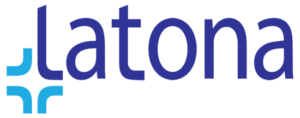EU Customs BPM Approach
In the current edition, we would like to present to you a milestone in our work within the Electronic EU Customs field.
The EU Customs Business Process Models (EU Customs BPM) were created in 2010 upon request of the Member States’ customs authorities and the trade community. This request is in order to facilitate the reading of the newly proposed legal provisions. It aims at a better understanding of the “TO BE” situation and the impact of the changes on the practical customs processes and procedures.
The EU Customs BPM and its related activities show the legal provisions in a visual, understandable and integrated way (combining provisions from UCC (Union Customs Code), UCC DA and UCC IA)
EU Customs Business Process Models Goals
Legal Goals
- Provide analytical support and business process models in support of Customs legislation and policies being prepared or revised;
- Ensure better understanding and quality of the business processes embedded in the UCC and its Delegated and Implementing Acts and Facilitate the discussions in the Customs Code Committee;
- Check the business logic provided in the legal draft and identify opportunities for streamlining of the business processes;
- Give guarantee to the EU Member States that the legal proposals are harmonized and applicable in practice and have added value.
IT Goals
- Ensure that the functional and non-functional requirements for development of new IT system or for enhancement of the existing IT systems are well specified and agreed with the EU Member States and Trade;
- Achieve agreement on the functional structure of Information that is to be Exchanged between the all the actors involved in the Customs Business Processes.
EU Customs BPM Levelling Approach
DG TAXUD has developed a BPM methodology around the BPM work and relevant documents.
The methodology defines the levelling approach, modelling methods and tools, and guidance. Levelling refers to different layers of abstraction. Business processes are provided in a hierarchical format. Hierarchical modelling enables the development of a holistic view of the customs business.
Each level consists of other models which present more or fewer details according to the purpose it is trying to serve. A model that shows how a process should be implemented will be more detailed than a model showing how different processes are related to each other.ARIS software suite has been selected to effectively create and manage the EU Customs BPM.
ARIS
A tool that is suitable for modelling and organizing business processes in a collaborative manner. ARIS provides functionalities and model types that make it possible to organize business process models in such a hierarchical way. The approach for the ARIS BPM levelling encompasses four levels. The levels present both horizontal and vertical views of the customs business from the less detailed level of models (Level 1) to the most detailed level of models from a functional point of view (Level 4).
Level 1 Global BPM & Data
Overview of EU Customs Business Domains and Global Business Data (the starting point in ARIS BP for all specific BPMs).
Level 2 Interaction BPM & Data
Interactions between EU Customs Business Domains incl. input and output High-Level Data.
Level 2 High-Level BPM & Data
Decomposition of the Global Business Data into specific data clusters used per Business Domain
Interactions between the main business processes within each EU Customs Business Domains.
Level 3 Business requirements BPM & Data
The flow of the legal and business tasks within each main business process and the interactions between the involved actors.
Data requirements defined in the legislation.
Level 4 BPM Functional req/specs & Data
The flow of the envisaged system; information exchanges; data rules and conditions; requirements trees.

Most of all, we are proud of our contribution to the development of the EU Customs Process Model and EU Customs Data Model. Further on we established the blueprints related to the development of EU Customs Service Reference Model. This is a business-driven, functional framework which draws the transformation path of the Customs Administrations integration with the existing systems and processes in the current reality. If you’re interested in this topic, don’t hesitate to contact us for some additional information.
Keep an eye on our blog if you’re also curious about interesting facts and news from the eCustoms world.



Leave a Reply
Want to join the discussion?Feel free to contribute!